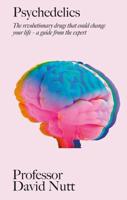Publisher's Synopsis
The need to provide adequate medicines has been present for as long as humanity can trace its roots. Since antiquity people have tried to cure diseases by eating, drinking or applying substances; often plant extracts that are now referred to as herbal medicines. Originally the attempts to discover new drugs and new cures were based on intuition and empirical observation, while any successful results were more likely to be the product of fortunate accidents. A large part of the pharmaceutical industries' success had its origins in serendipity. In fact, long before such an industry existed, medicines were being discovered by accident, and their use was passed down by written and verbal tradition.1 For example, both digitoxin and aspirin are active principals of natural products, namely foxglove leaf for dropsy, brought about by congestive heart failure, and willow bark for arthritis. Both of these remedies were described and used some hundred(s) of years before the isolation of their active components Thus, William Withering was struck by cases of dropsy (edema) that had been improved by herbal remedies, and he came to the conclusion that the active ingredient was foxglove. He published his results in 1785, but it was not until the 20th century that the cardiac glycosides were structurally and pharmacologically described. In a similar way, willow bark (Salix alba) was known by the ancients as an antipyretic, and in the early 19th century a glucoside of salicylic acid was isolated from it, and this was followed shortly by the isolation of salicylic acid which was shown to be antipyretic. Later, widespread use followed the recognition of its analgesic.












